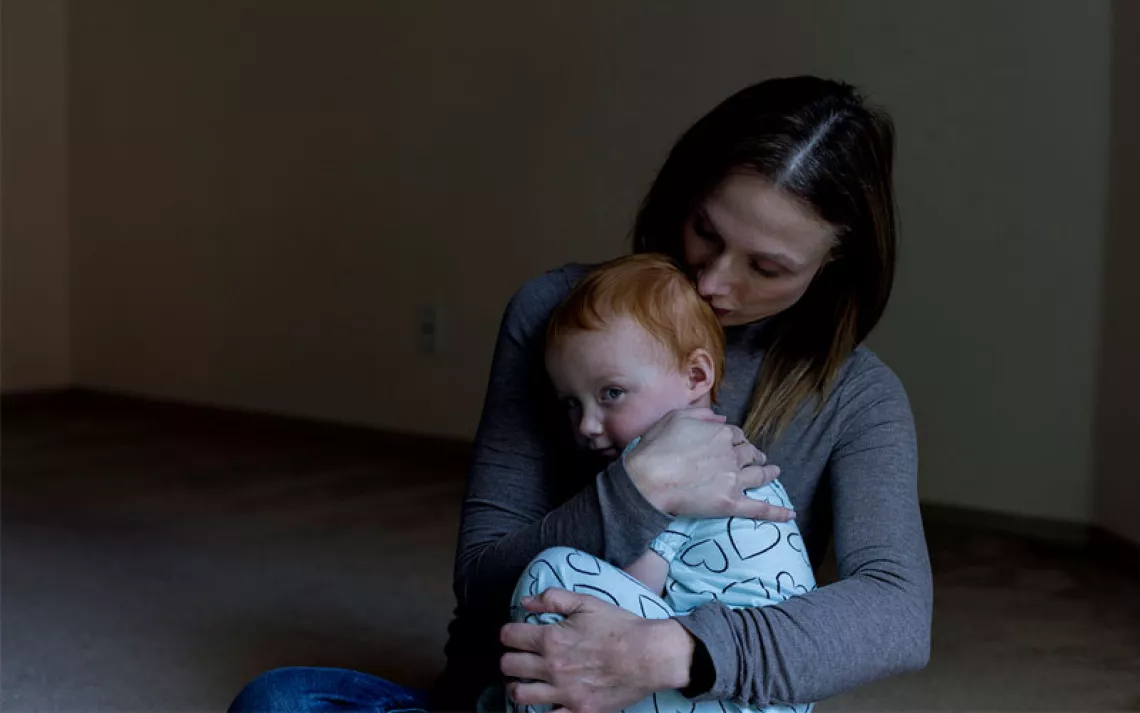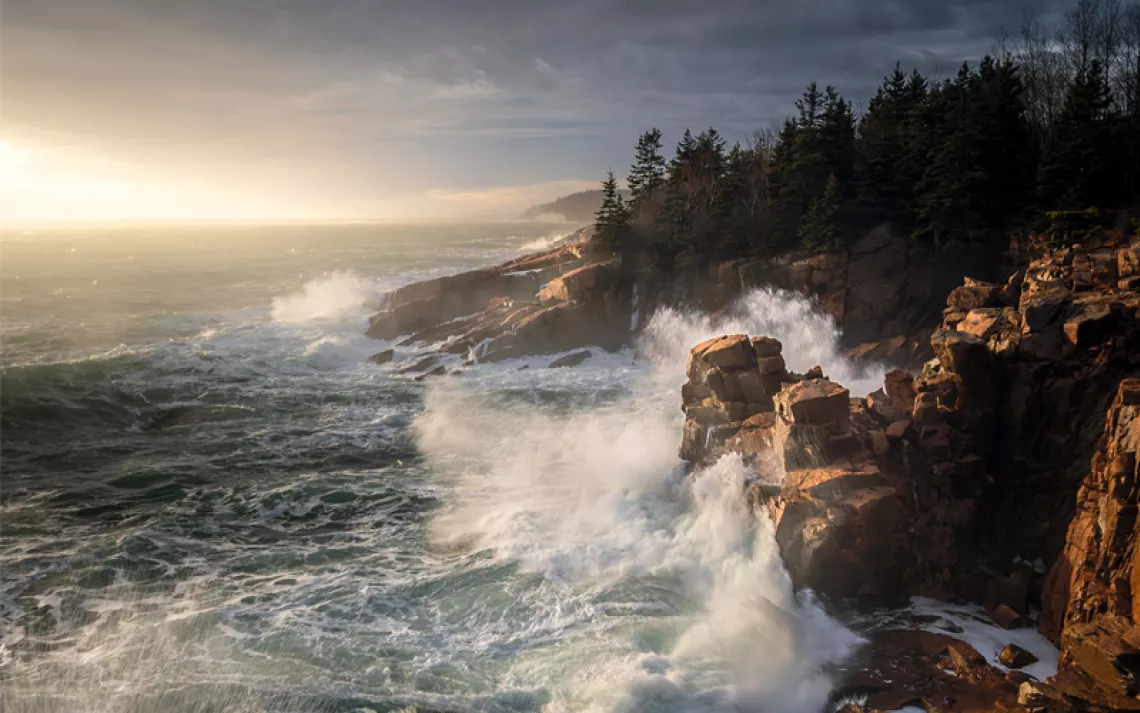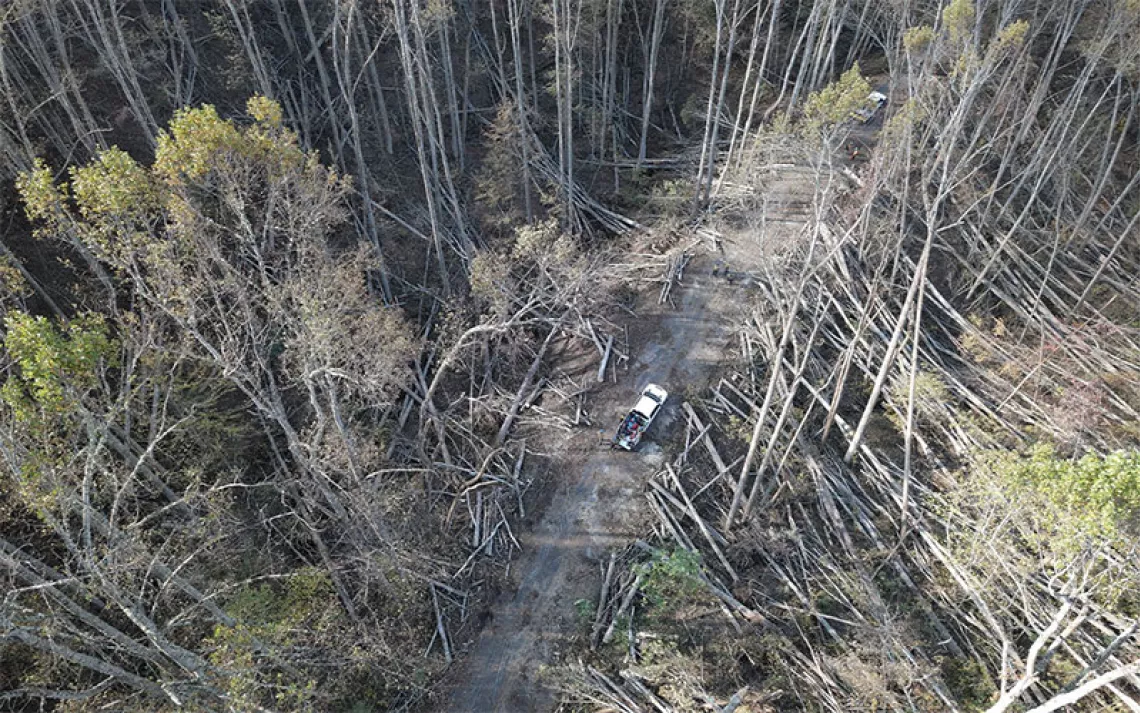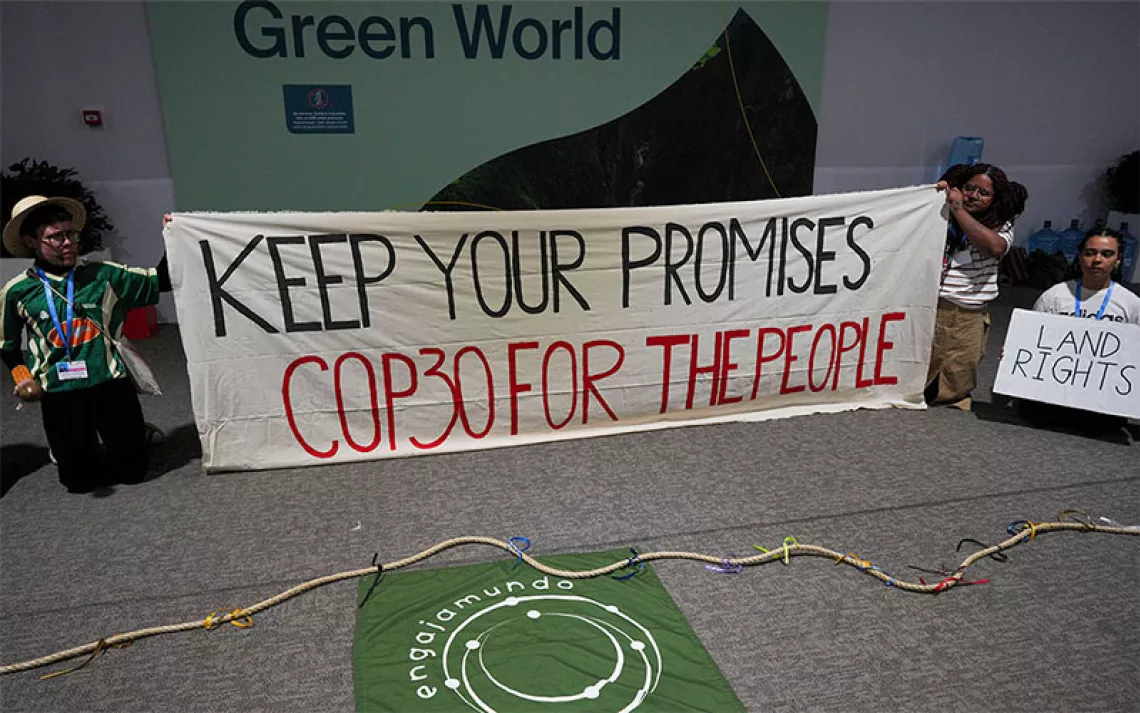Youth Activists Fight for Their Future at COP26
The kids are alright, and they would like to grow old with normal weather

Demonstrators across from UN headquarters in New York. | Photo by John Lamparski/Associated Press
This column is part of Covering Climate Now, a global journalism collaboration cofounded by Columbia Journalism Review and The Nation to strengthen coverage of the climate story.
Today, as the negotiations inside the halls of COP26 inch-wormed to a close, the youth-led Fridays for Future took to the streets, as they do every week. Throughout COP26, youth climate activists have shown high ambition and leadership. From the opening ceremony to the youth protest last Friday, they have called on developed nations to take action and reduce emissions by 50 percent below 2010 levels by 2030 and to ramp up funding for developing nations. On Wednesday, they took two further actions.
Wednesday’s draft text of the agreement coming out of Glasgow stated that governments should “accelerate the phasing out of coal and subsidies for fossil fuels.” While it remains to be seen if the sentence will remain in the final draft, it marks the first time that fossil fuels were included in the draft text. Saudi Arabia and Russia, two of the four largest oil and gas producers, do not want fossil fuels in the final draft. The two other main producers are Canada and the United States. Previous attempts to include a reference to fossil fuel subsidies in 1992 and the 1997 Kyoto Protocol were stymied by the US.
Although many cheered the inclusion of fossil fuels in Wednesday’s draft agreement, youths demanded something more sweeping, a Fossil Fuel Non-Proliferation Treaty. At a press briefing, youth activists and Fridays for Future, also known as Youth Strike for Climate, the movement of students inspired by Greta Thunberg—who skipped Friday classes to demand action on climate change—announced that they were endorsing the already-drawn-up Fossil Fuel Non-Proliferation Treaty. The treaty, put forward by nongovernmental organizations, aims to end new coal, gas, and oil extraction and to phase out existing production, not merely ending subsidies. The youth activists criticized that a fossil fuel phase-out was not part of the draft text. Further, they expressed outrage over the fact that over 500 fossil fuel lobbyists, totaling more than any single country’s delegate count, were at COP26.
Additionally, given the lack of commitments to serious emissions cuts so far in the negotiations, on Wednesday, 14 youth activists stated that they were filing a legal petition with United Nations Secretary-General António Guterres, asking him to declare a level 3 emergency, the highest priority, in response to the climate emergency. They also asked for the secretary-general to establish a team to “oversee immediate and comprehensive global action on climate.” Youths involved include Litokne Kabua (18, Marshall Islands) and Alexandria Villaseñor (16, United States), among many others.
Youth activists have also been protesting throughout COP26, mainly outside but at times also inside the halls. Tens of thousands also took to the streets in a youth-led Fridays for Future demonstration to demand action. The protest was followed by another demonstration on Saturday and solidarity marches around the world. Amazonian youths from Brazil and Ecuador led the entire march and then took to the main stage.
COP26 kicked off with a focus on youth. Opening speeches by young people quickly went viral. Elizabeth Wathuti, 26, Kenya, told of the drought in her home country, how two rainy seasons did not happen and how it left over 2 million Kenyans facing starvation and harvests failing. The rivers have run dry, and people and animals are dying. “Your will to act,” she said, “must come from deep within.… The children cannot live on words and empty promises.” Over and over, she appealed to the world leaders and delegates in the silent negotiation hall: “Please, open your hearts—and then act.”
Brianna Fruean, 23, from Samoa, told world leaders: “The real question is whether you have the political will to do the right thing, to wield the right words and to follow it up with long overdue action. If you are looking for inspiration on this, look no further than the climate leadership of young Pacific people. We are not just victims to this crisis. We have been resilient beacons of hope. We are not drowning. We are fighting.”
As the momentum of youth activism and its demands has built up, so, too, has their recognition inside the halls of COP26. “The most important energy in this movement is coming from young people,” former president Barack Obama said on Monday morning. “The reason is simple—they have more stake in this fight than anyone else. That is why I want to spend the rest of my time today talking to young people.” He highlighted youths in all three of his speeches. On Tuesday, Speaker of the House Nancy Pelosi followed suit, mentioning youth and Indigenous activists as she spoke on a panel. Tom Friedman tweeted, “This is the first COP I’ve been to where the delegates are more afraid of the kids than the press.”
But are these just gestures of appeasement? Too little too late? Some certainly thought so. Youth activists who were inside stated that they were often trotted out for public appearances but that their voices and opinions were not heard.
Today, Vanessa Nakate, of Uganda, said, “We are drowning in promises. Promises will not stop the suffering of people. Only immediate and drastic action will pull us back from the abyss.”
The gaps in age, gender, and race between those inside and outside the halls of COP26 have been hard to overlook at what has been deemed the most exclusionary COP due to vaccine apartheid, visa challenges, and the prohibitive costs. To bring attention to this point, one delegate in the main negotiating hall last week asked delegates to raise their hands if they were under 30 (about 10 did so) or under 20 (only five). The delegate was trying to highlight how youth voices are missing from the negotiations.
It should not be the responsibility of youths to solve the climate emergency. Youths have done the least to contribute to the crisis but will suffer the impacts of the actions (in the case of greenhouse gas emissions) or of inaction (in the case of COP26) of those who have come before them, especially in the Global North. It would behoove the elders in the room to really consider what it means to be and have been a good elder, to leave a world to future generations that can be lived in.
As the conference heads into its final days, it is not clear whether the youths' call to action will be heeded. A final agreement will be presented on Saturday or Sunday. Then, we will know if this year’s COP26 has made the ambitious reductions to emissions needed to keep global warming to 1.5°. If not, youth activists are sure to keep the pressure on.
 The Magazine of The Sierra Club
The Magazine of The Sierra Club



